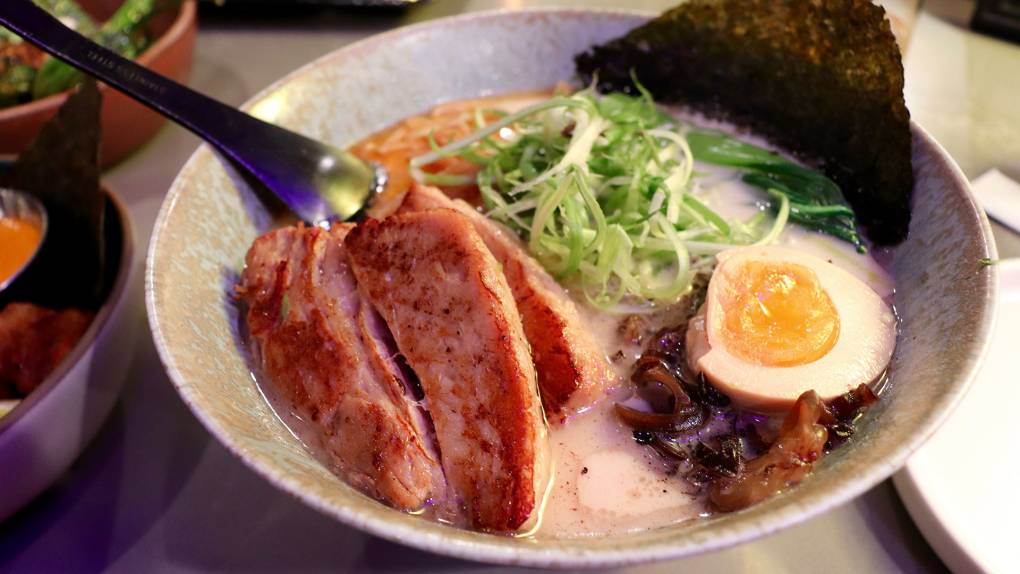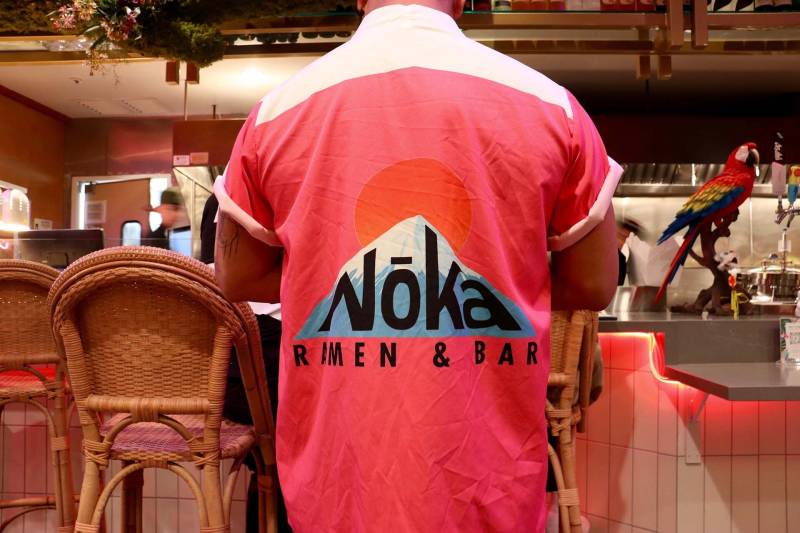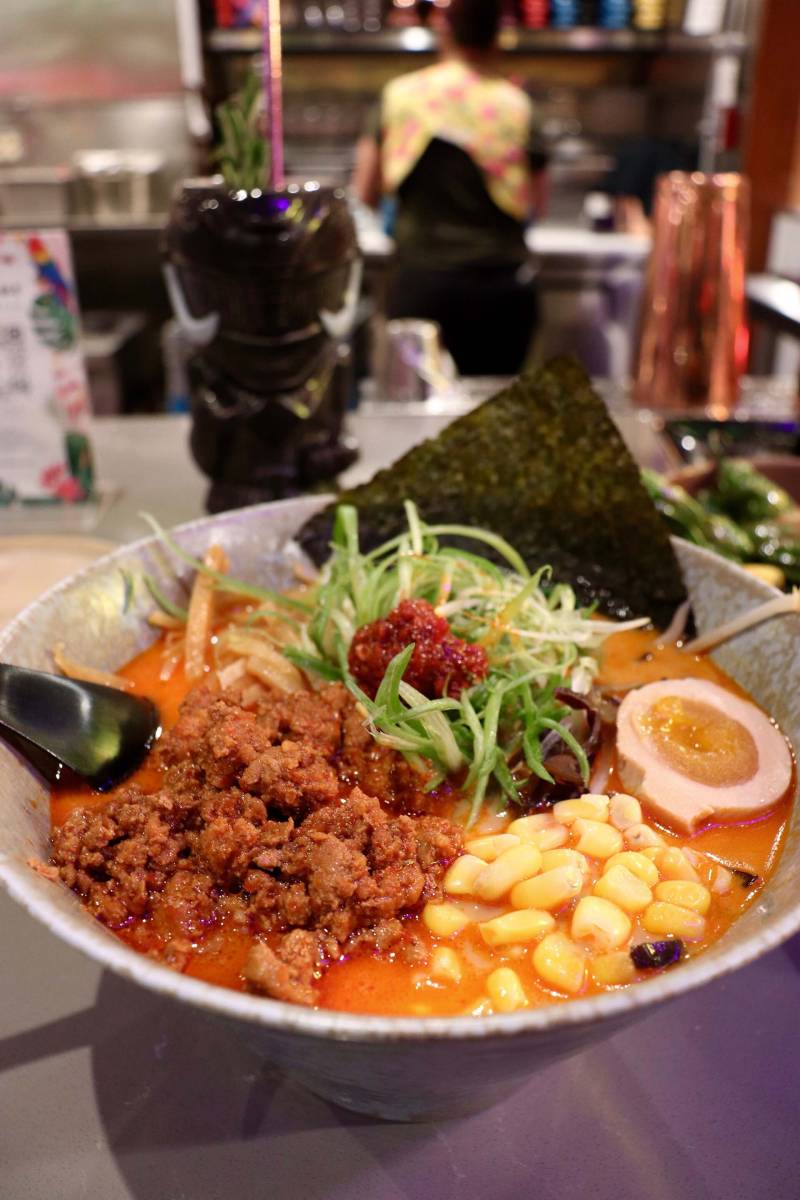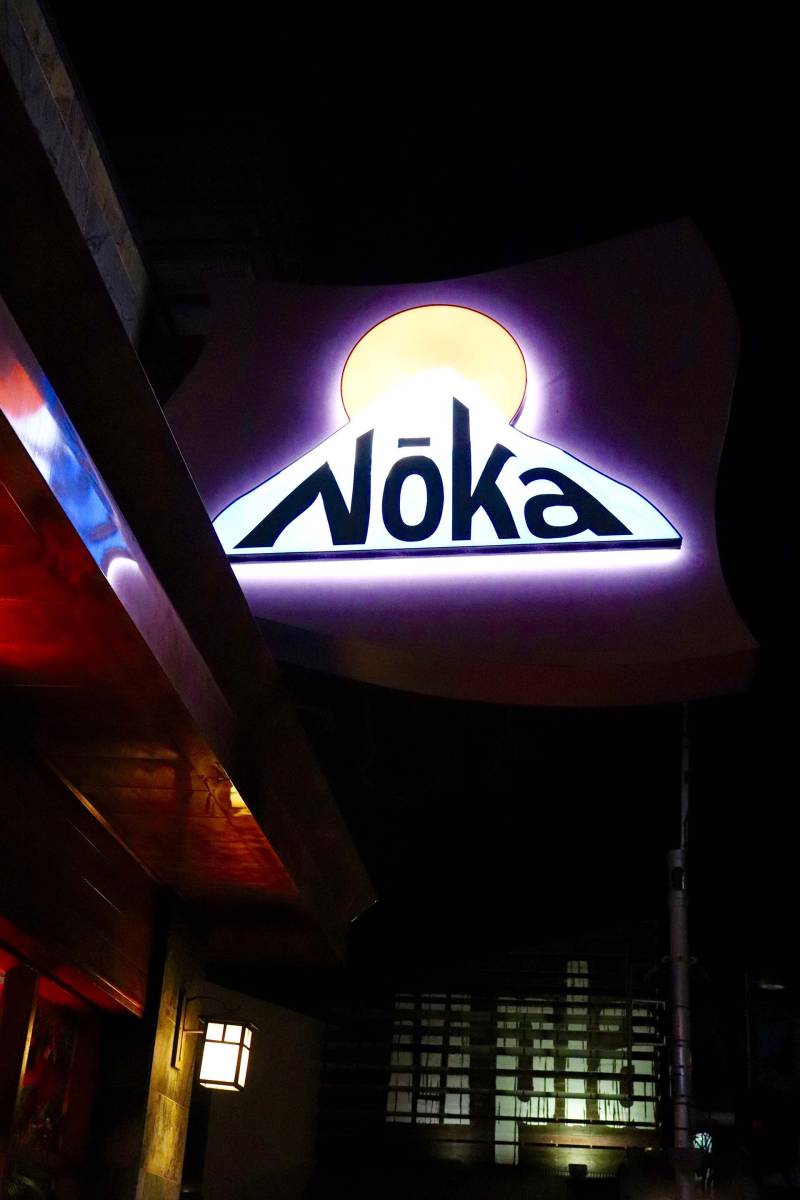Samurai Restaurant Time gives kitschy thrills fit for Kabukicho
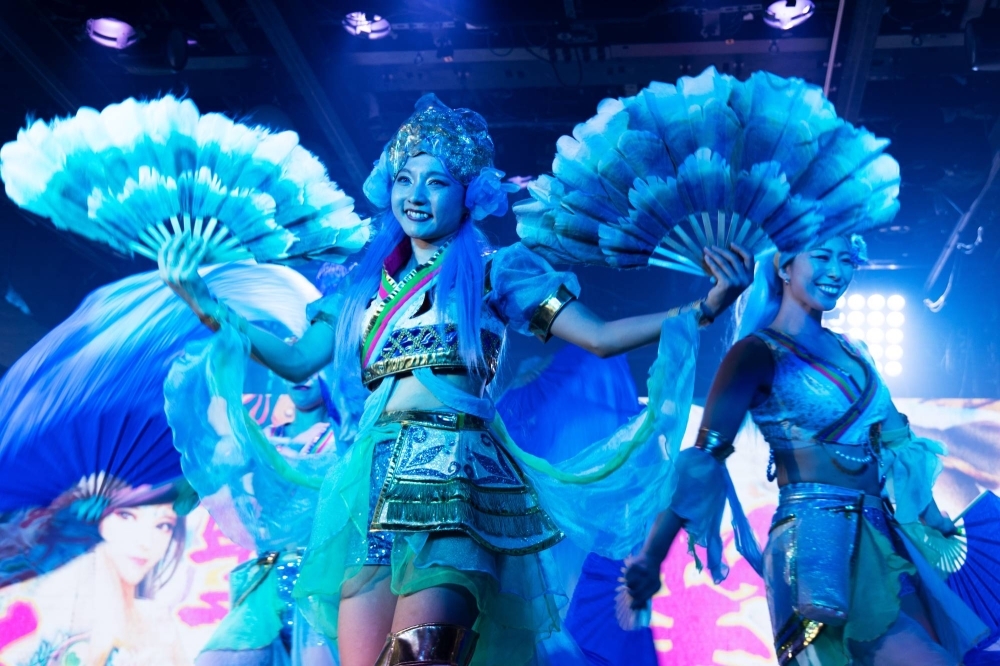
By the finale, I had completely bought into Samurai Restaurant Time's spectacle — a neon-lit festival with chants and cheers. | LAURA POLLACCO
BY LAURA POLLACCO
CONTRIBUTING WRITER
SHARE
Nov 12, 2023
Tokyo’s Robot Restaurant was a top tourist destination for years before it closed during the pandemic. A gaudy experiment in dinner theater, it often sated appetites for “wacky” Japan even if the food left visitors wanting.
The neon-soaked streets of the Kabukicho nightlife district are now serving up a similarly kitschy second course: Samurai Restaurant Time. In the same location as its predecessor, the show opened Oct. 10. It’s run by the people behind Gira Gira Girls, a “girl’s bar” in the same building that delivers what would be considered adult entertainment in most countries.
This association with Gira Gira Girls confused one honeymooning couple who were visiting from Los Angeles. Even more confusing was the scene that awaited them on their pre-2:30 p.m. arrival: a BDSM stage performance complete with revealing leather costumes and flogs (the show now asks ticket holders to arrive at 2:30 p.m. in order to avoid any adult content).
“We were recommended this by a friend,” says Juan Lopez. “She said, ‘It’s going to be kind of weird but you have to go check it out.’ When we put in the directions and it said Gira Gira Girls, we thought, ‘What’s going on? Should we cancel?’ In the end we decided to go for it.”
His partner, Andrea, chimes in. “We had the reservation already, so why not?”
Another couple, this time from Texas, seemed equally bewildered.
“We didn’t even know this was a different thing,” says Eric Luikens, adding that he and his partner, Kansas Johnson, thought they were in fact going to the Robot Restaurant.
“We saw videos of the robot show online,” adds Johnson, “so we guess this will be kind of similar.”
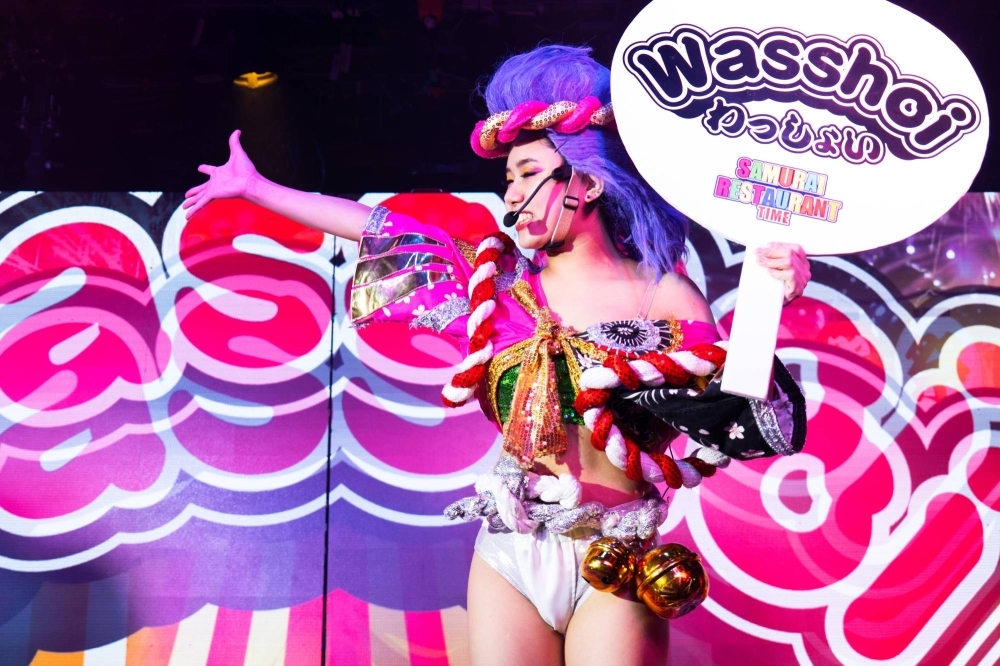
While not officially affiliated with the defunct Robot Restaurant, the new Samurai Restaurant Time lunch show scratches many of the same itches. | LAURA POLLACCO
Samurai makes use of the same font and colors that its popular predecessor once employed, and is located in the same spot. Robot Restaurant’s now-defunct URL even redirects to the new restaurant’s page, but Gira Gira Girls stresses that Samurai is its own show.
“Rather than replacing something, we want to create a completely new and unique form of evolving entertainment,” says sales representative Kazuyori Hayashi . The concept, he continues, is to give tourists a “show full of Japanese hospitality and energy ... where you can experience the ‘Japanesque’ of the past and future and be surprised.”
I arrived for the show expecting something akin to what I had experienced at Robot Restaurant, and the entrance at least didn’t disappoint. An enthusiastic host led me down a flight of psychedelic stairs to the seating area, which was arranged in eight booths that lined the back of the showroom’s wall with a long table right at the front of the stage. My seat was almost dead center of the long table, allowing me to feel the full energy of the performance, even if I did need to occasionally turn my head to take in everything.
At 2:30 p.m., the room began to fill. The opening acts consisted of various dance performances accompanied by live singing, which was a good way to keep up the energy in the room as stragglers found their seats.

Samurai Restaurant Time delivers two hours of showy, over-the-top and exuberant performances complete with bright lights, bright costumes and even brighter set dressing. | LAURA POLLACCO
As with Robot Restaurant, drinks and foods are available. My ¥9,000 ticket (reserved through the official site) included a set meal or drinks, with the option to purchase off the menu later on. The set meals range from beef steak to ramen noodles, which come in self-heating bento boxes. Additionally, snacks, soft drinks and alcohol are also available for purchase, with a can of beer going for ¥500 or ¥600, and popcorn for ¥700.
The meals themselves are standard fare — not bad, not great — but, let’s face it, the food isn’t really why people come.
The main event kicked off at 3 p.m. and went on to deliver two hours of showy, over-the-top and exuberant performances complete with bright lights, bright costumes and even brighter set dressing. The performance I attended began with a Halloween-themed opener, complete with free treats to get us all in the mood. Eventually, the show turned its attention away from spooks and toward its namesake theme: samurai.
The samurai segment consisted of a mythical storyline that, if we’re being honest, you’ll struggle to recall once you’ve left the premises. If you’re looking for a riveting retelling of the story of Tokugawa Ieyasu — you’re in the wrong place.

If you’re looking for a riveting retelling of the story of Tokugawa Ieyasu — you’re in the wrong place. | LAURA POLLACCO
Instead, Samurai Restaurant Time delivers a tale of flashy samurai, evil lords, shrine maidens, magical armor, betrayal and sword battles with flips and spins — and lots of long-haired wigs. It’s a cliched stew of what Japanese theme restaurateurs likely believe Western tourists want and, well, they may be right on that front.
The whole show is targeted at English-speakers, with English text displayed in the background while performers lip sync to some questionable and clunky dialogue. The English itself is likely to grate on the legions of English-teaching locals that may want to make an afternoon out of Samurai, but I thought it added to the whole aesthetic — a fusion of early Japanese 8-bit games, 1980s anime and all the unpolished English translations those genres entailed. If this was deliberate, then I say to Samurai’s scriptwriters, “All my praise are belong to you.”
Despite Samurai’s scheduled two-hour running time, the show itself is filled with numerous intermissions that are designed to get you to buy more drinks, snacks and even merchandise while stagehands change the set and allow performers to catch their breaths. On that note, while the script may not be winning any awards anytime soon, the staff at Samurai are pretty great at helping you from the moment you arrive. Most have excellent English and are attentive in their service.
The roughly 20-minute finale is where Samurai could most closely be considered a sequel to Robot Restaurant. Out came the big mechanized floats, taiko drummers and fan wavers, a visual and audio assault that climaxes in a cacophony of celebratory joy. By this point, the audience and I had completely bought into its spectacle — a neon-lit matsuri-style festival with chants and cheers.
Is the Samurai stage show rough around the edges? Sure. Could it be more polished? Absolutely. Is there a lot of razzle dazzle trying to gloss over the cracks? Yes. But the performers give it 100% and are rewarded with a roomful of smiles and applause in the end.
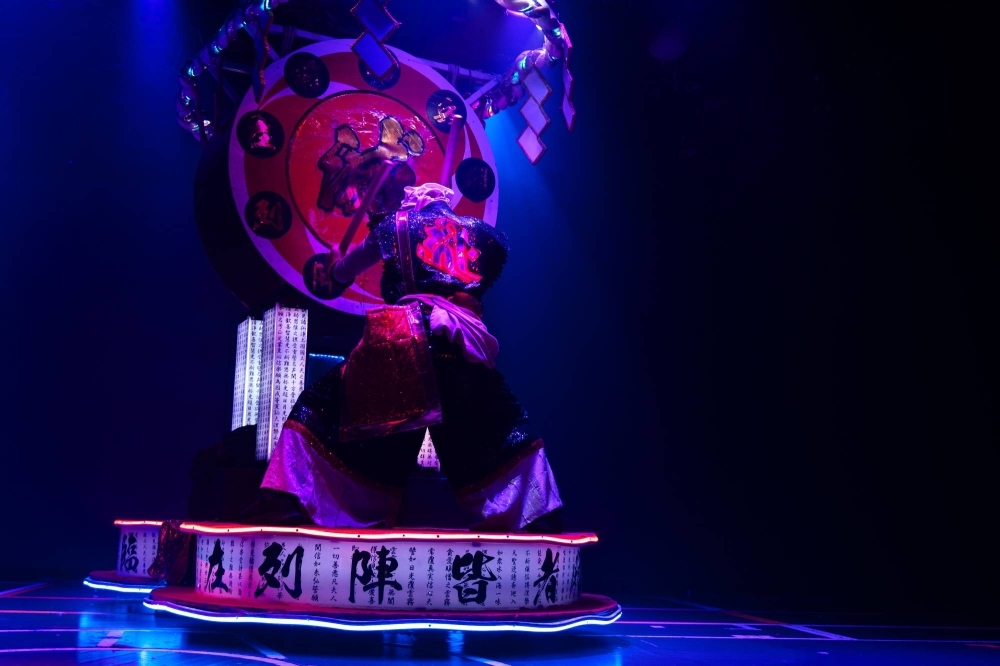
Elements of the performances at Samurai Restaurant Time evoked the energy and exuberance of a traditional Japanese festival. | LAURA POLLACCO
“I thought it was great,” says Swiss tourist Kamil Kosmalski. “It was very Japanese in the most commercial, modern way we know it.”
Despite their previous concerns that they'd signed up for something of a strip show, the Lopezes were also satisfied with the outcome.
“It’s super kitschy, but charming in its own way,” says Juan, “It feels a little amateur but that’s part of the charm. If you’ve ever been to Las Vegas, it reminded us of some of the shows there. It may not be 100% put together — but still very fun.”
Samurai Restaurant Time scratches many of the itches left behind by the closure of Robot Restaurant, providing the same over-the-top presentation of Japanese culture, for better or worse. As someone who lives here, I tend to try to avoid what are considered gimmicky tourist spots, but I found myself getting swept up in the overall madness and joy in front of me. Like climbing Mount Fuji, however, once is enough.
The robots are dead. Long live the new age of samurai.
For more information on Samurai Restaurant Time, visit giragiragirls.com/reservation.



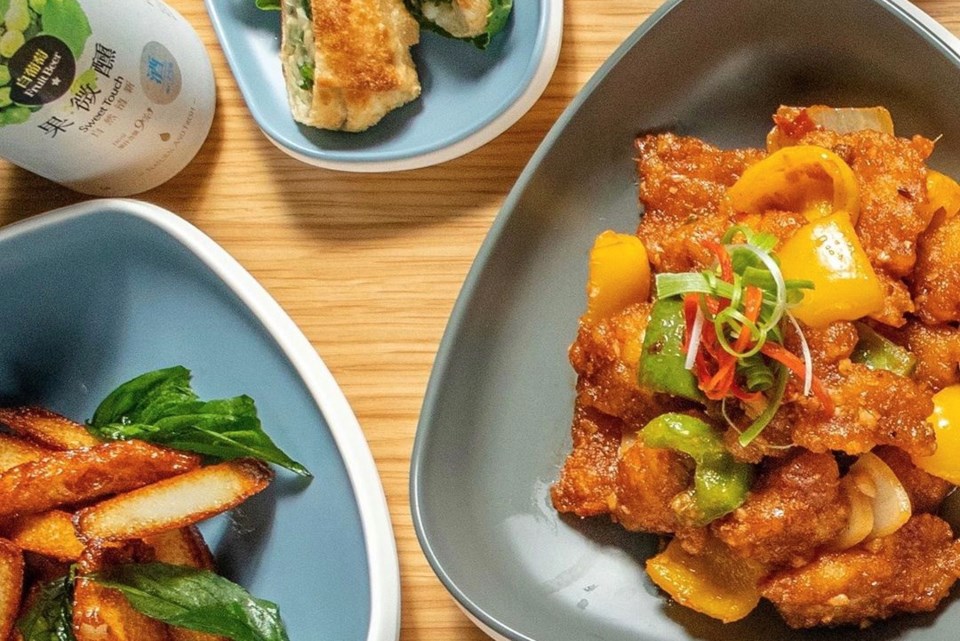
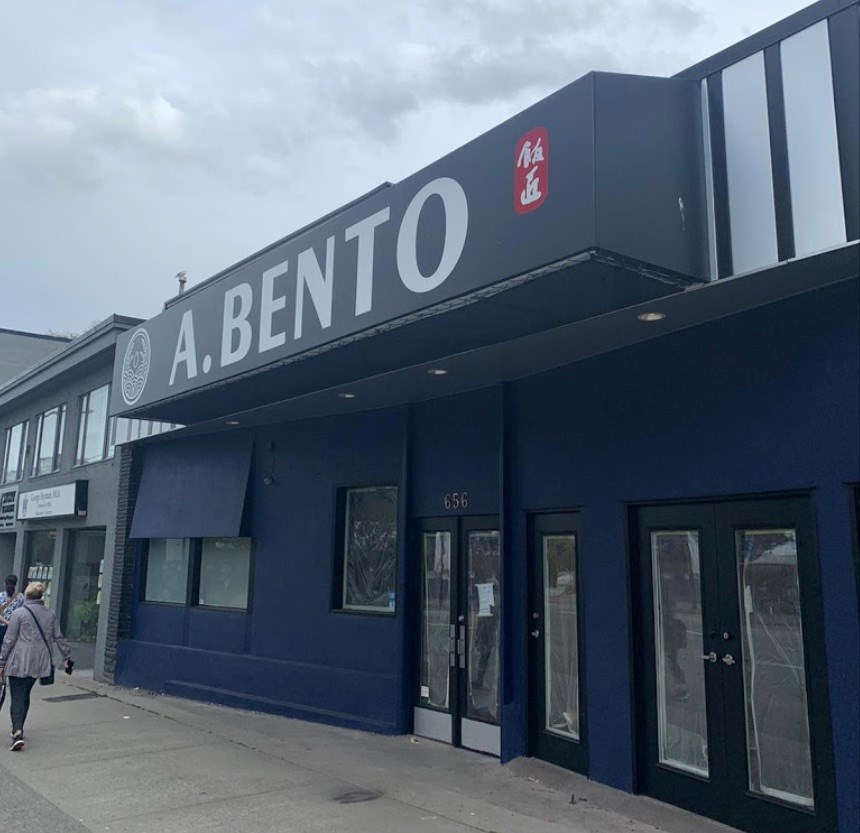

 Reply With Quote
Reply With Quote

/cloudfront-us-east-1.images.arcpublishing.com/pmn/BI7Y5ZKVQFATNKES6G2BLQ3HXE.jpg)
/cloudfront-us-east-1.images.arcpublishing.com/pmn/JN4HTWG3A5DTLKZCFPNRXACUFI.jpg)
/cloudfront-us-east-1.images.arcpublishing.com/pmn/ZMHP4HW7FRCNZB4TFYBTS6D6ZQ.jpg)
/cloudfront-us-east-1.images.arcpublishing.com/pmn/F5TER2SJ2VHAXMGGFBDIEXETVE.jpg)
